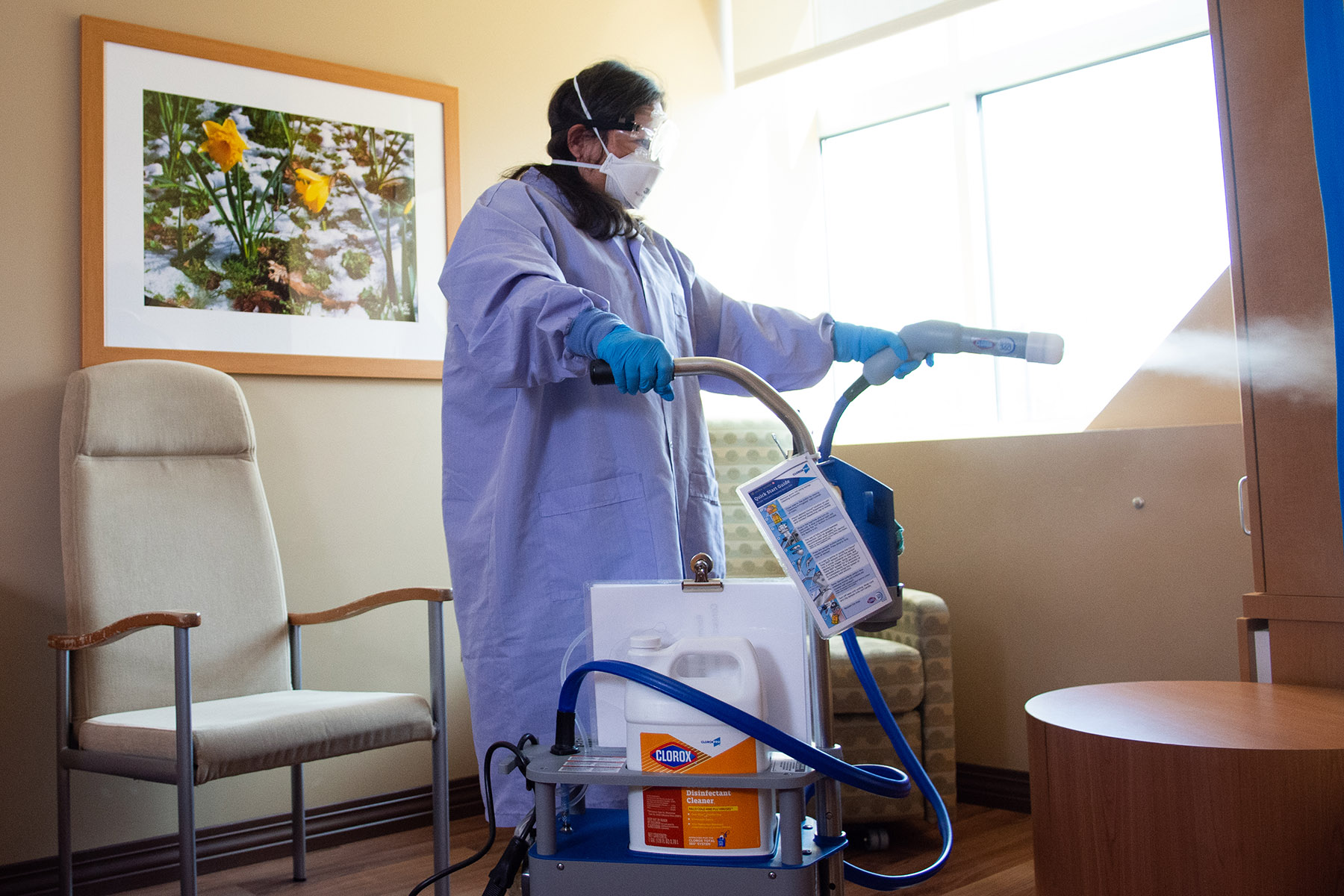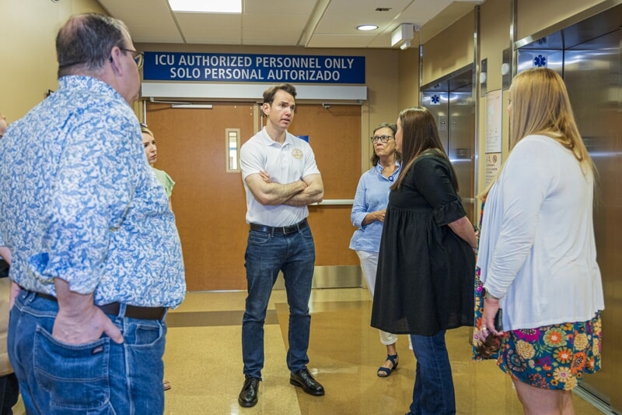NIH Foundation gifts latest COVID cleaning system to NIHD
- Category: NIHD News
- Posted On:
- Written By: Barbara Laughon / Strategic Communications


In this extraordinary time of the COVID-19 pandemic, the Northern Inyo Healthcare District extends its gratitude to the Northern Inyo Hospital Foundation for once again helping to deliver the highest quality of patient care thanks to a recent donation. The NIH Foundation recently purchased the Clorox Total 360 electrostatic spray cleaning system, bringing the latest technology in disinfecting patient care areas to the District.
Clearly, these days, keeping the District safe for anyone coming in – patients, visitors, and District staff -- is the most essential thing NIHD’s Environmental Services team can do.
“We take this seriously,” says ES Manager Richard Miears. “It’s something we’ve always taken seriously. We’ve never had to dramatically adjust our approach in the past seven years that I’ve been with the District because our cleaning standards were so high to start with. State and national regulations require it, and our team and community expect it. Our job is to deliver it every day.”
Miears talks proudly of how low NIH’s post-surgical infection rate is, how it’s the lowest in the region, and how long it’s been so low. He sees that success as a long-term team effort between the Surgical staff and the ES team. “And with COVID, it’s been no different,” he says. “The Nursing team does a phenomenal job of communicating the needs with us, then we take it from there.”
Andrea Daniels is one of three staff coordinators working with Miears to oversee the ES team’s day-to-day operations. She was tasked with learning the Clorox Total 360 system inside and out, then training the rest of the ES team. Her first reaction?
“It’s a game-changer for us,” Daniels says. “First and foremost, it kills coronavirus and things like MRSA in just two minutes. Then the way it is applied saves us quite a bit of cleaning time. Plus, we’re able to turn rooms around faster – something that could make a huge difference in case we should experience a COVID surge.”
Preparing to demonstrate the system in an empty patient room, Daniels dons protective gear, everything from a fluid-resistant gown to gloves, an N95 mask, and protective goggles. Having already removed dust and particles from flat surfaces with a microfiber cloth, Daniels crouches down and perfectly aligns the sprayer nozzle with the chemical hose. Switching the system on, she raises up and only has to wait for just a second or two before a fine mist emits from the sprayer.
Carefully aiming the nozzle, Daniels makes sure the spray path overlaps but doesn’t soak the ceiling, walls, furniture, or equipment. “A little bit goes a long way,” she says over her shoulder, her movements resembling that of a painter. “Before, just washing down the ceiling and walls with a mop could take 45 minutes to an hour, and the repetitious moves were daunting.”
Clorox says the key to the Total 360 system is charging the finely dispersed disinfecting and sanitizing solutions with an electrostatic force that easily overcomes gravity. This allows the device to cover and clean out of sight surfaces and other areas that mopping and traditional sprays and foggers cannot reach. Comparing the system to conventional methods, Clorox says the system is four times faster, uses 65 percent less solution, and can cover an impressive 18,000 square feet an hour.
When Daniels completes her demonstration, District staff edge forward to watch the chemical cling, disinfect, then quickly dissipate by drying into the atmosphere. A slight chemical smell wafts in the air but just for a second. The audible level of positive murmurs in the room reveals the staff is impressed. Daniels is clearly happy as her face shows signs of a smile beneath her mask.
“We can’t begin to thank the NIH Foundation for what they’ve done for us,” Miears says. “The number of contact rooms our ES staff had to clean since the start of COVID has been overwhelming. Not only does the new system cut cleaning times and stress in half, but it also helps us boost our infection control efficiency. This is win-win not only for us but for our staff and our patients.”

